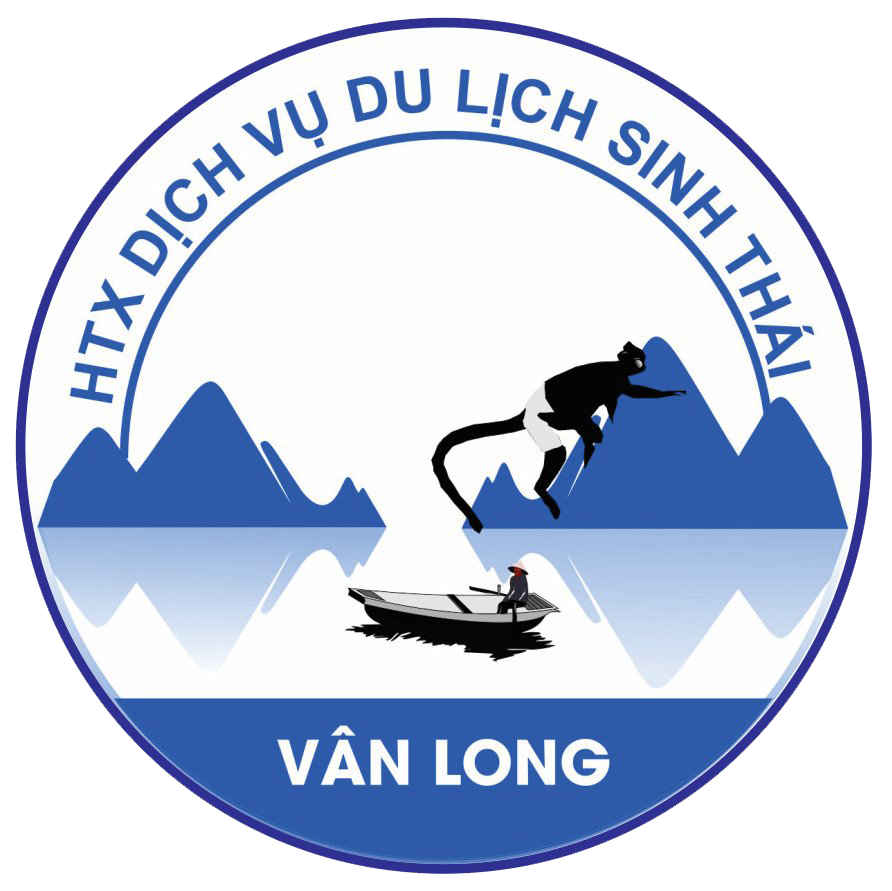Van Long welcomes you!
Contact us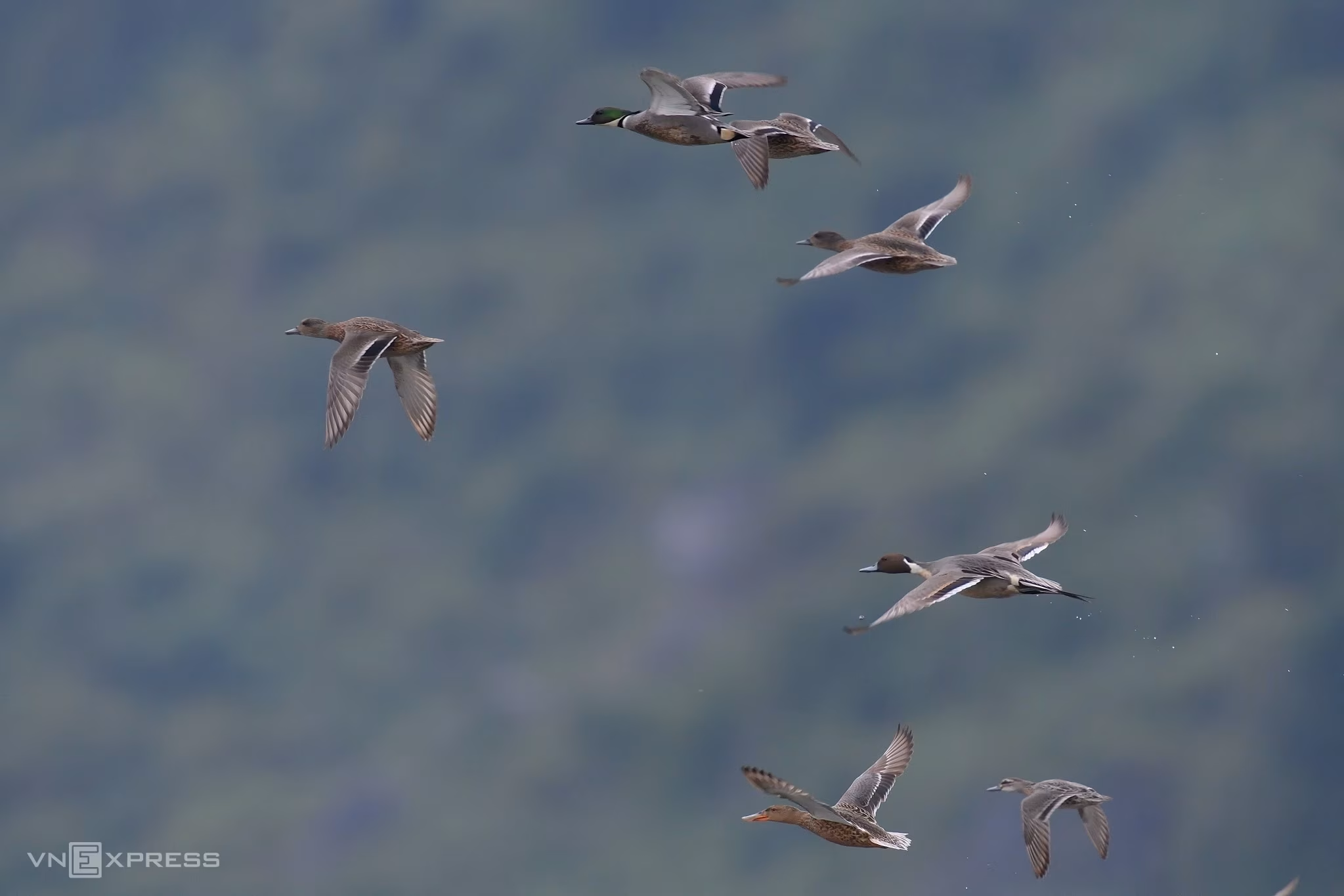
The ecosystem of Van Long can be divided into two main groups: terrestrial ecosystems and wetland ecosystems. Each has its own characteristics and plays an important role in maintaining the natural ecological balance.
Terrestrial Ecosystem
The terrestrial ecosystem of Van Long is primarily covered by secondary forests, grasslands, shrubs, and agricultural landscapes. It provides an essential habitat for many species of wildlife. This ecosystem includes:
Secondary Forest on Limestone Mountains: Characterized by small woody trees, climbing plants, and mixed vegetation growing along limestone slopes.
Grasslands and Shrublands in Dry Valleys: Adapted to nutrient-poor limestone soils, commonly found in areas with low humidity.
Vegetation on Slopes and Mountain Tops: Dominated by light-loving small trees and shrubs that can withstand harsh environmental conditions.
Agricultural and Residential Habitats: Comprising rice paddies, crop fields, and village settlements where numerous bird and animal species have adapted to coexist with human-modified environments.
Wetland Ecosystem
In addition to its terrestrial habitats, Van Long is renowned for its characteristic wetland ecosystem, which features flooded marshlands and rich aquatic vegetation. The dominant vegetation in this area consists mainly of short-lived herbaceous plants that thrive during the rainy season and decompose in the dry season.
Representative plant species include:
Saccharum arundinaceum (reed grass), Phragmites australis (common reed), Zizania latifolia (manchurian wild rice), Hygrophila salicifolia, Nymphaea spp. (water lilies), Hydrilla verticillata, and Myriophyllum aquaticum.
Based on vegetation growth characteristics, Van Long’s wetland ecosystem can be divided into four main plant communities:
Deep-water plant communities: Dominated by aquatic species such as water lilies and Myriophyllum aquaticum, adapted to deeper water environments.
Shallow-water plant communities: Consisting of reeds, wild rice, and other species adapted to shallow, seasonally flooded conditions.
Vegetation on abandoned flooded fields: Found in disused paddies, composed of short-lived herbaceous plants that thrive in temporarily flooded soils.
Floating aquatic vegetation: Including duckweed (Lemna spp.) and water hyacinth (Eichhornia crassipes), which create the distinctive scenery of the wetland area.
Thanks to the diversity of both its terrestrial and wetland ecosystems, Van Long Wetland Nature Reserve plays a critical role in conserving rare flora and fauna, while serving as an attractive destination for scientific research and ecotourism.
Floral Diversity at Van Long Wetland Nature Reserve
The Van Long Wetland Nature Reserve (Ninh Binh) is home to a wide variety of ecosystems, resulting in remarkable plant diversity. According to the 2010 biodiversity survey, the reserve recorded 722 plant species, belonging to 163 families and 481 genera, distributed across six divisions of higher plants.
Magnoliophyta (Angiosperms) dominates with 659 species (91.27%).
Polypodiophyta (Ferns) follows with 51 species (7.06%).
The remaining divisions together account for 1.67% of the total species.
The most diverse plant families are the Spurge family (Euphorbiaceae) with 42 species, the Daisy family (Asteraceae) with 34 species, the Mulberry family (Moraceae) with 29 species, the Grass family (Poaceae) with 27 species, and the Legume family (Fabaceae) with 22 species.
Among the 481 plant genera, the Fig genus (Ficus) has the highest number of species with 20.
Vân Long also boasts a diverse aquatic flora with 35 species. Notably, 27 plant species here are listed in the Vietnam Red Book (2007) and the IUCN Red List, including 3 critically endangered (CR), 7 endangered (EN), and 14 vulnerable (VU) species. Additionally, 7 species are protected under Decree 06/2019/ND-CP.
The reserve is home to 411 species of plants with medicinal value, including two rare species recorded for the first time in Vietnam: Aristolochia hainanensis and Aristolochia mollissima. The abundance of plant resources, particularly medicinal plants, plays a vital role in biodiversity conservation and sustainable development.
The flora in Vân Long reflects the influence of both natural conditions and human impact. Protecting and restoring the forests, especially the rare plant species, is essential for maintaining the ecological balance and preserving the biodiversity of the area.
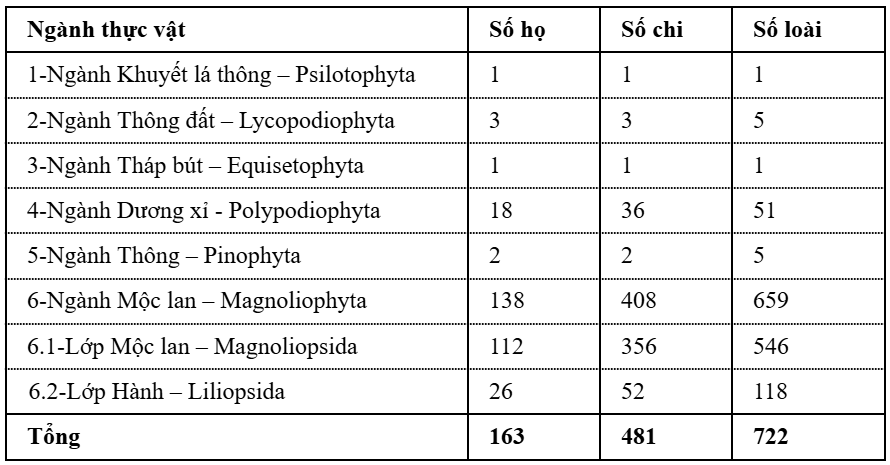
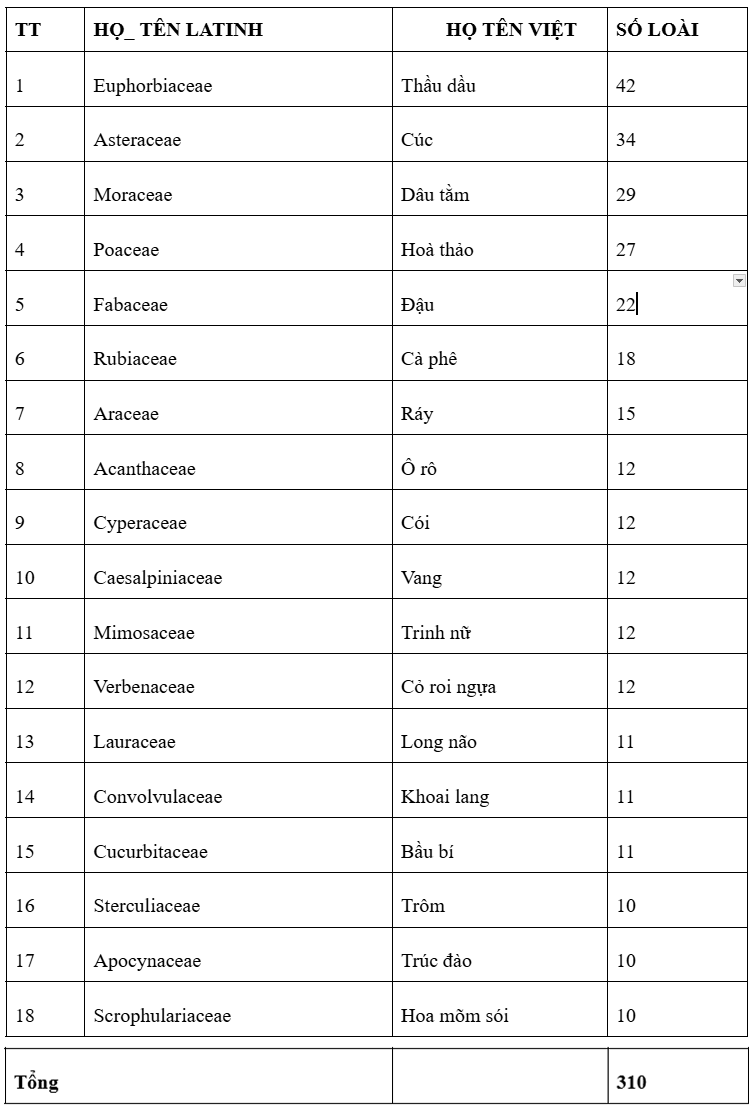
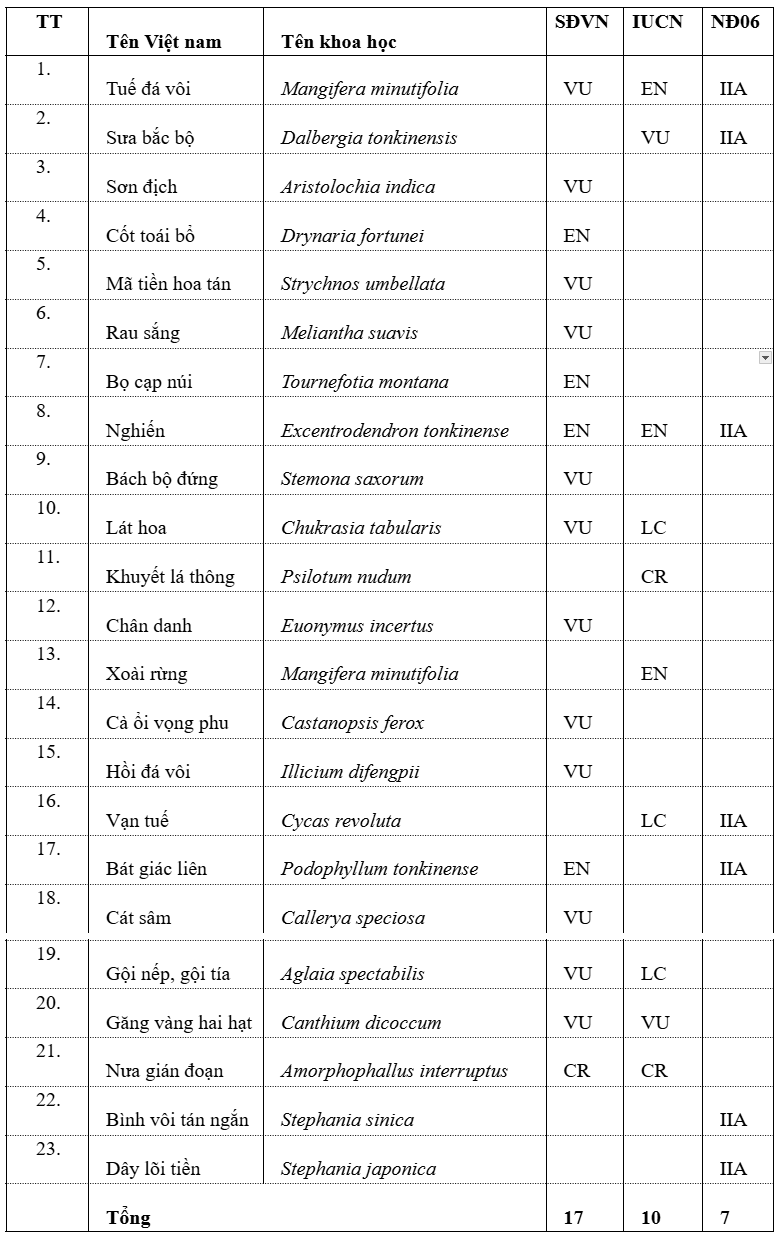
Diversity of Fauna
The Vân Long Wetland Nature Reserve is not only home to a rich flora but also to a diverse range of rare animal species. Research from 2010 and previous years shows that the aquatic fauna here is highly diverse with 60 species of crustaceans and mollusks, 48 terrestrial gastropod species, 132 insect species, and 43 fish species. Among these fish, two are listed in the Vietnam Red Book (2007): Sinilabeo lemassoni (cá Rầm xanh) and Channa maculata (cá Chuối hoa) (Nguyễn Lân Hùng Sơn et al., 2011).
In addition, the reserve's reptile and amphibian populations are quite diverse, with 17 amphibian and 13 reptile species. This includes Cyrtodactylus soni (Thằn lằn ngón sơn), a new species first recorded for Vietnamese science at this location in 2016. The mammal class in Vân Long consists of 39 species, most notably the Delacour's Langur (Trachypithecus delacouri), a globally critically endangered primate endemic to Vietnam, with a population of approximately 300 individuals currently living here.
Vân Long is also an important habitat for 200 bird species from 55 families and 17 orders, including 99 migratory species and 92 resident species. The reserve provides ideal ecological conditions for waterbirds, making it a highly valuable wetland for conservation and earning it recognition as Vietnam's 9th Ramsar Site in 2017.
With its two main ecosystems—limestone mountain forests and wetlands—Vân Long not only conserves many rare plant and animal species but also serves as an ideal destination for visitors to observe the Delacour's Langur and various waterbirds, with a sighting rate of up to 80%.
Detailed Information about Some Rare Species at Vân Long:
Delacour's Langur (Trachypithecus delacouri) is a rare and endemic primate species that only exists in some limestone mountain areas of Vietnam. The species was named after the famous French scientist Jean Théodore Delacour.
Scientists described this species based on two animal skin samples purchased from local hunters in Hồi Xuân district, Thanh Hóa province. After 50 years without any records of the species, in 1987, scientists first observed it at Cuc Phuong National Park. By 2000, the largest population of this species was recorded at the Vân Long Wetland Nature Reserve with 40 individuals. It is one of the four endemic primate species of Vietnam and one of the 25 globally critically endangered (CR) primate species.
The species is characterized by its glossy black fur and a prominent white patch on its rump. Its tail is longer than its body, measuring 1.3 times the body length. This species primarily lives on sheer limestone cliffs and feeds on leaves, sour, and bitter fruits. It is the symbol of the Vân Long Nature Reserve. To date, the total population in Vietnam is recorded at just over 500 individuals, with Vân Long providing a safe habitat for about 300 individuals. For this reason, in 2010, Vân Long was proudly recognized by the Vietnam Record Book as "The place with the largest population of Delacour's Langurs." The Delacour's Langur plays a crucial role in the ecological balance of the limestone forest ecosystem. The Vân Long Nature Reserve is not only a place to protect the largest population of the species but also a destination that attracts tourists and researchers interested in wildlife conservation. Efforts to maintain a safe habitat for this species play a vital role in biodiversity conservation in Vietnam.
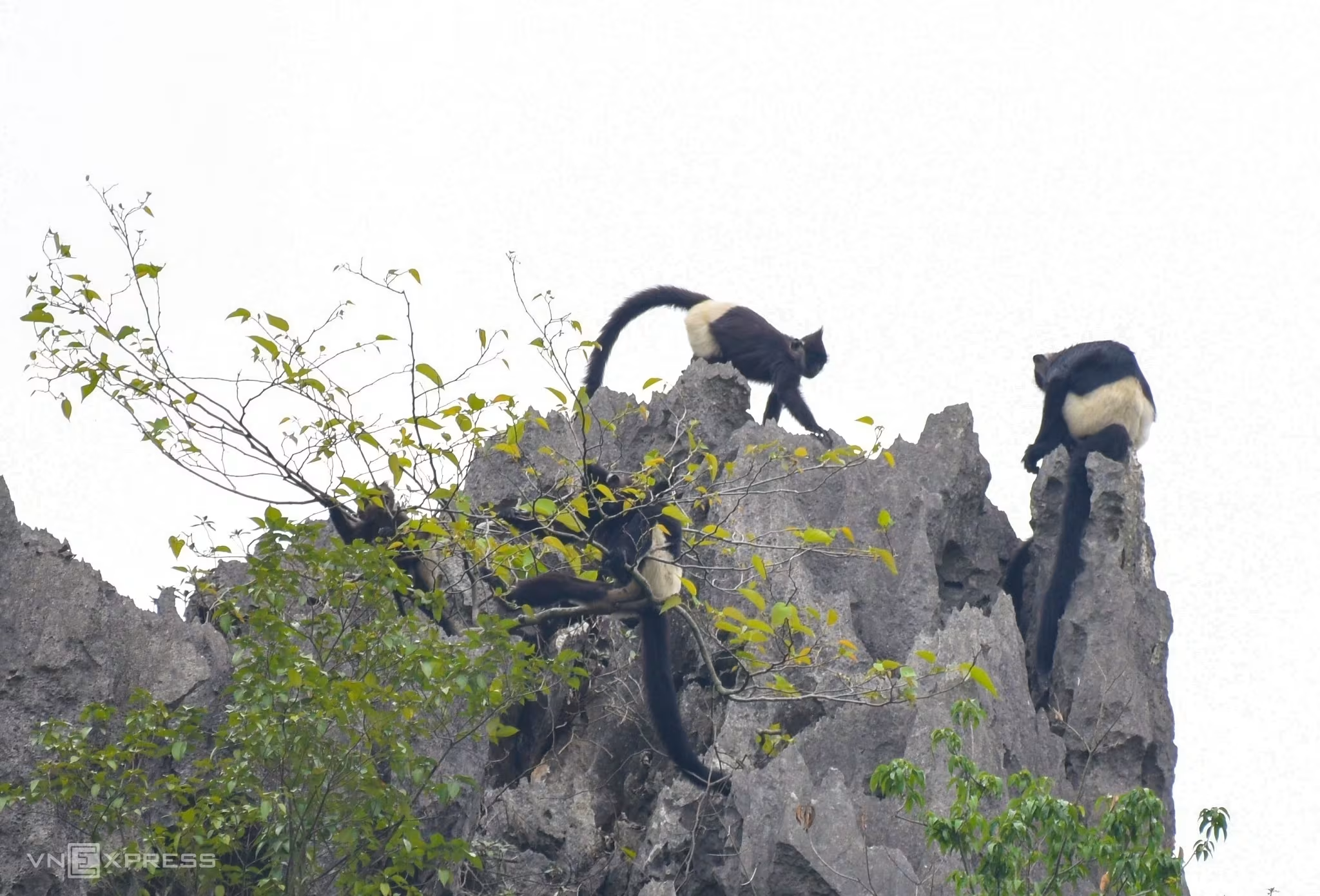
Son’s Bent toed Gecko (Cyrtodactylus soni)
Son’s Bent toed Gecko (Cyrtodactylus soni) is a reptile species endemic to the Gekkonidae family. It was discovered in the Vân Long Wetland Nature Reserve, Ninh Bình province, in 2016 by scientist Nguyễn Lân Hùng Sơn and his colleagues. This was a new and significant discovery for both Vietnamese and global science. By 2018, the species was also recorded in Hà Nam and Hòa Bình provinces (Lưu Quang Vinh et al., 2018).
Key Characteristics
This is a medium-sized gecko with a body length of up to 103 mm. Its morphological features include 10-13 rows of dorsal tubercles, 41-45 rows of ventral scales, and a distinct dorsolateral fold. Males have 6-7 precloacal pores and 6-8 femoral pores, while females have 7-8 shallow precloacal depressions. It also has enlarged femoral scales, widened subcaudal scales, and irregular black transverse bands on the dorsal surface of its body.
Habitat
Son’s Bent toed Gecko is adapted to living on limestone cliffs, often near areas with a human presence, at an altitude of 17-28 meters above sea level.
Conservation Importance
The discovery and description of Son’s Bent toed Gecko are crucial for understanding and conserving Vietnam's endemic biodiversity.
